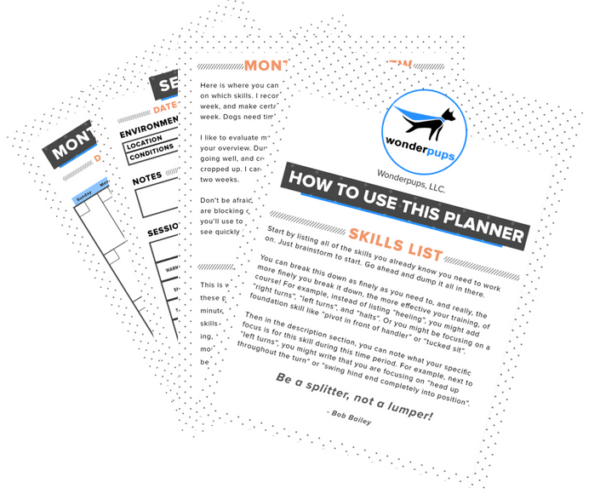I’ve been spending some time lately pondering on how my use of language has changed… or even evolved somewhat in the area of dog training.
It sounds like splitting hairs, but I do think the specific words that I use to talk about my training or to my students about their training… makes a difference.
One of the words I’ve spent some time thinking about is “ignore” and how my use of the word has changed.
By ignore, I mean when we deliberately, intentionally disregard a behavior.
Ignoring is HARD for most trainers to swallow, and even harder to actually follow through on… and it can sometimes be an appropriate behavior management strategy, and sometimes it’s not helpful at all!
When shaping we are taught (correctly) to focus on one criteria at a time, and temporarily relax other criteria. For example, while focusing on speed, we may ignore errors of precision… *temporarily*, and that’s key.
Ignoring errors of precision can be quite painful for the type A, obsessive dog trainer, but gets easier with experience. And also it gets easier to tell when it’s appropriate to ignore minor errors and trust that they’ll come out in the wash.
One example I come across a lot is in shaping (or reshaping) a perfect fold back down. I know that the rear end drives the behavior, so I’m intially focusing on shaping for rear feet still. But while focusing on those rear feet, we may see a little front foot movement occur. I know that the front feet will settle down once the hind feet criteria are well-conditioned, but a newer trainer may not know this and may worry that we are ruining the behavior. However, I’ve walked this path with dozens and dozens of dogs, so I have confidence in ignoring a little front foot movement because of that experience.
But sometimes ignoring those errors CAN ruin the behavior, for example when training contact behaviors in agility.
This is often taught as stopping in a 2o2o, especially with nose pressing a target. And it’s intially taught at low speed, with precise criteria for that targeting behavior. Then at high speed, usually relaxing criteria on precision… either deliberately or not…
And if we NEVER go back and clean up that precision later, we will absolutely degrade the behavior in the long run… and that’s what often happens. (Rats!)
So in many places, I’ve taken to using the word “note” or (borrowed from TAGteach Theresa) “shelve”, instead of “ignore”. This means we notice the error is happening. We internally acknowledge the error, make a note of it, and design a future training session to address it.
Example: Fronts
Focus: getting the dog close enough
Off point error: dog is close, but now crooked
I won’t actually ignore that, but I don’t act on it in the moment either. I don’t want to withhold reinforcement based on crooked when I’m getting the criteria of closeness that I’m focused on.
But for good fronts, I need both straight and close. If the dog isn’t close enough (arm’s length) it’s potentially an NQ. Crooked, but close is just points. So I’m not going to interrupt the training session at that point to address straightness, BUT I’m not going to let it go on for days or weeks either.
I need to make a new plan, either set shaping criteria to address the straightness or management to prevent crooked position while working on closeness.
Management: chute or barrier
Shape: pivot platform, which really manages the closeness
But ignoring can sometimes be useful in behavior management, especially when the behavior in question is problematic, and attention is reinforcing the behavior. Then Not Paying Attention to it will tend to reduce the behavior (through extinction). Of course, extinction may manifest as frustration. So we still have to be aware of our choices here.
This is one of the places where what is often labeled “demand barking” can get confusing. Many times the dog is barking because he’s frustrated. Because path to reinforcement is not clear. So in that case, ignoring behavior won’t help, and what is needed is splitting and positive reinforcement to show a clear path to access reinforcement.
However, in some cases ignoring behavior and letting it extinguish is reasonable plan, for example when the dog is nosing for petting while you are working on the computer. That’s a great place to use deliberate ignoring to extinguish the behavior in many cases.
Review
If you see an error cropping up, decide if it’s directly related to the focus of your training session
If yes, address it immediately
If no, decide… should you ignore completely, shelve it, and design a plan for the next session to address it, or manage the error so it can’t occur
If working with a problem behavior, is simple social interaction maintaining that behavior? If so, ignoring it is useful. OR is that behavior really an expression of frustration, in which case showing the dog a clear path to reinforcement is your best bet.
